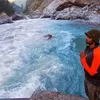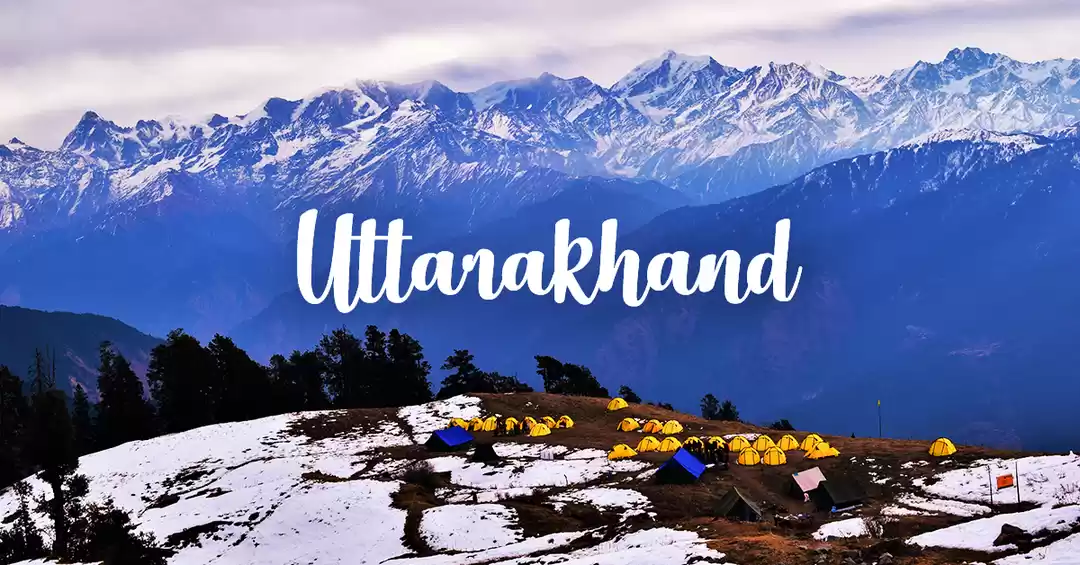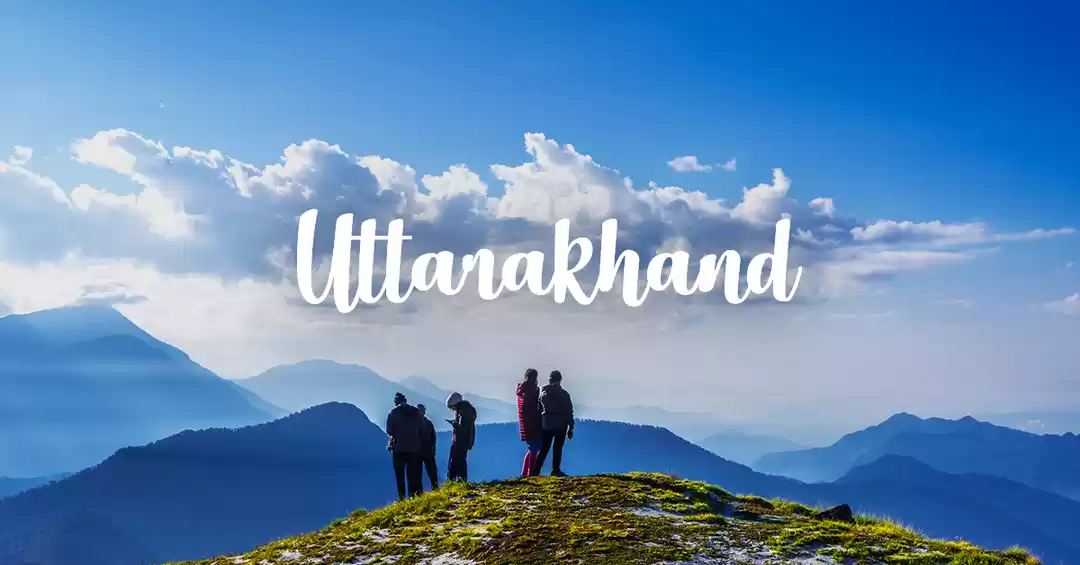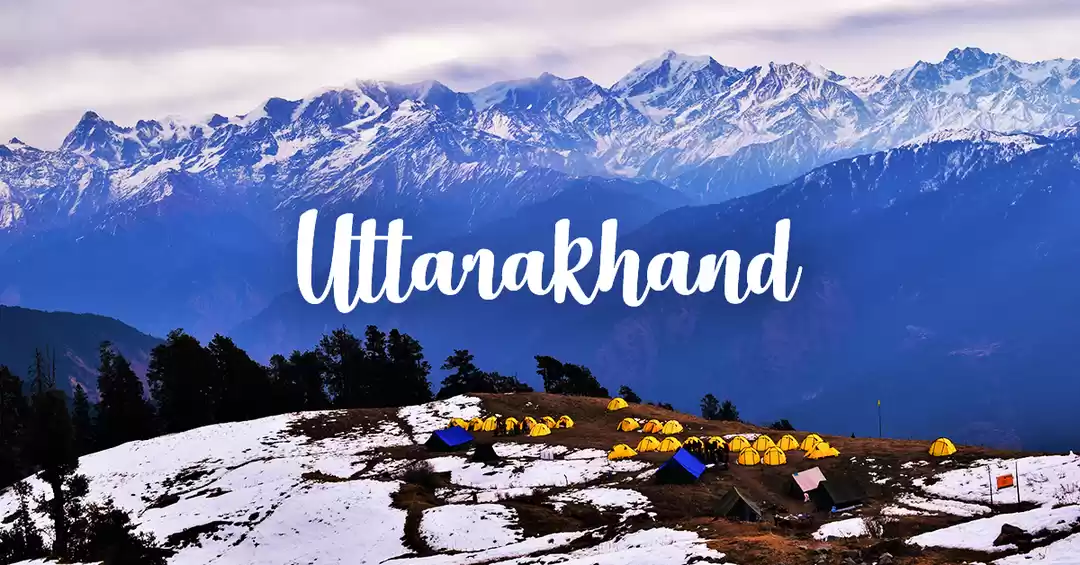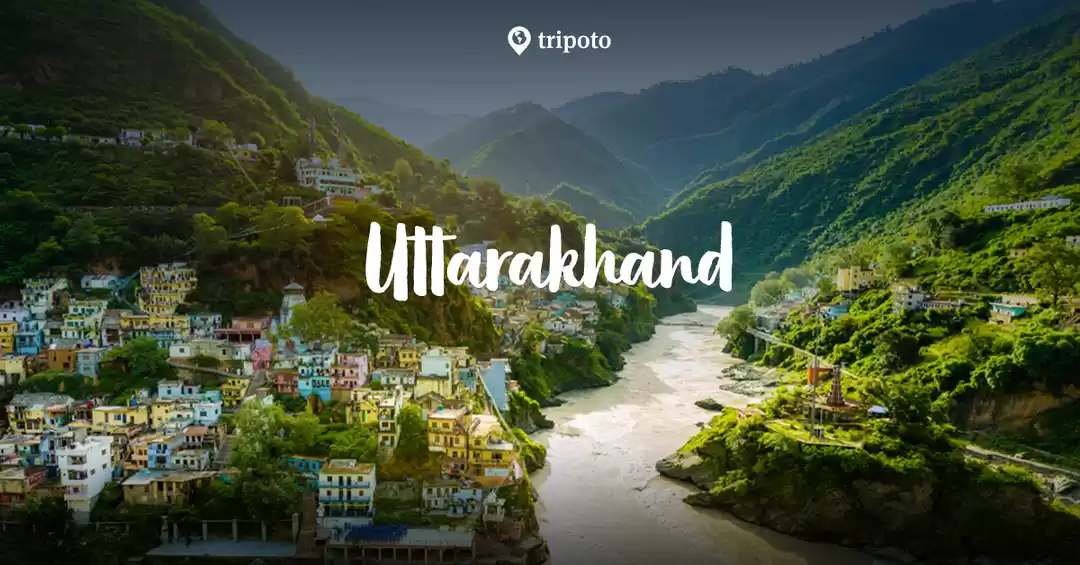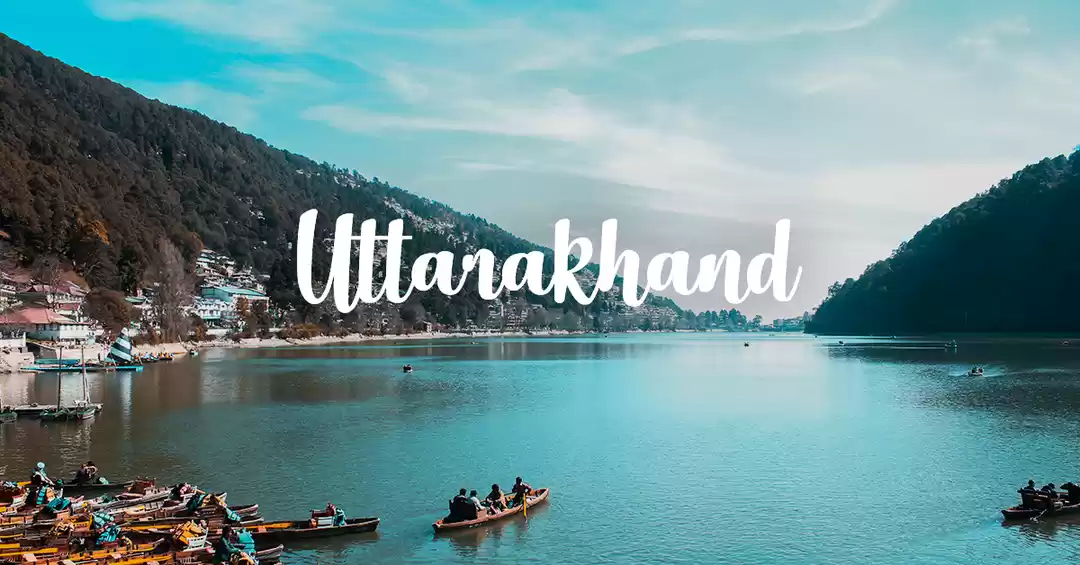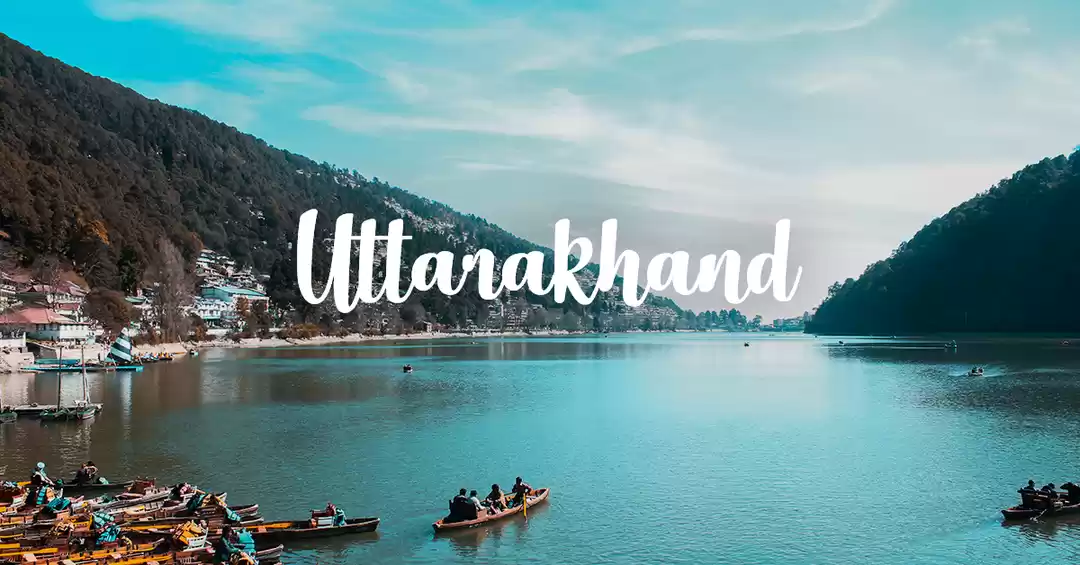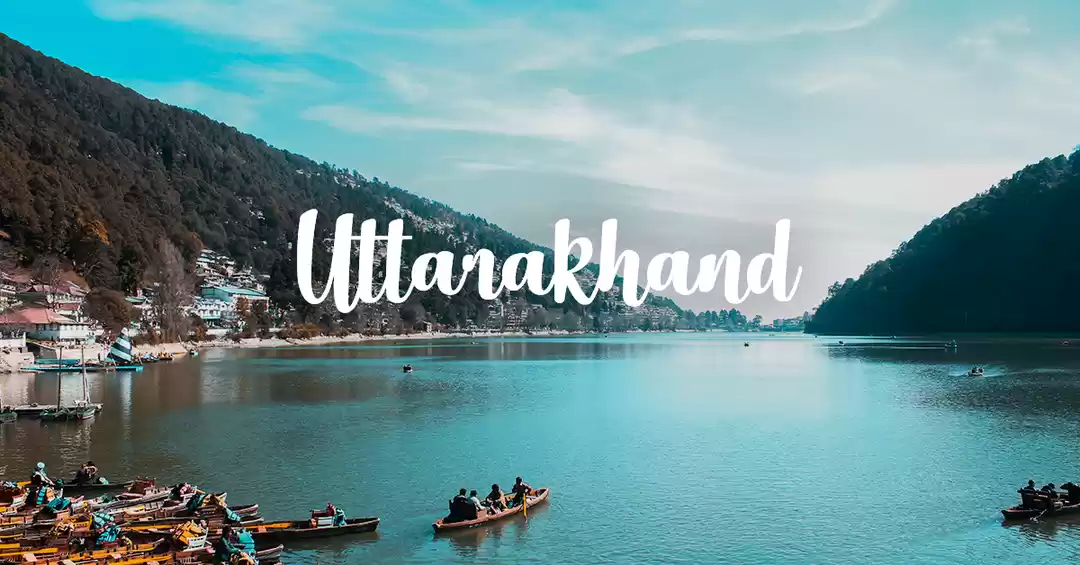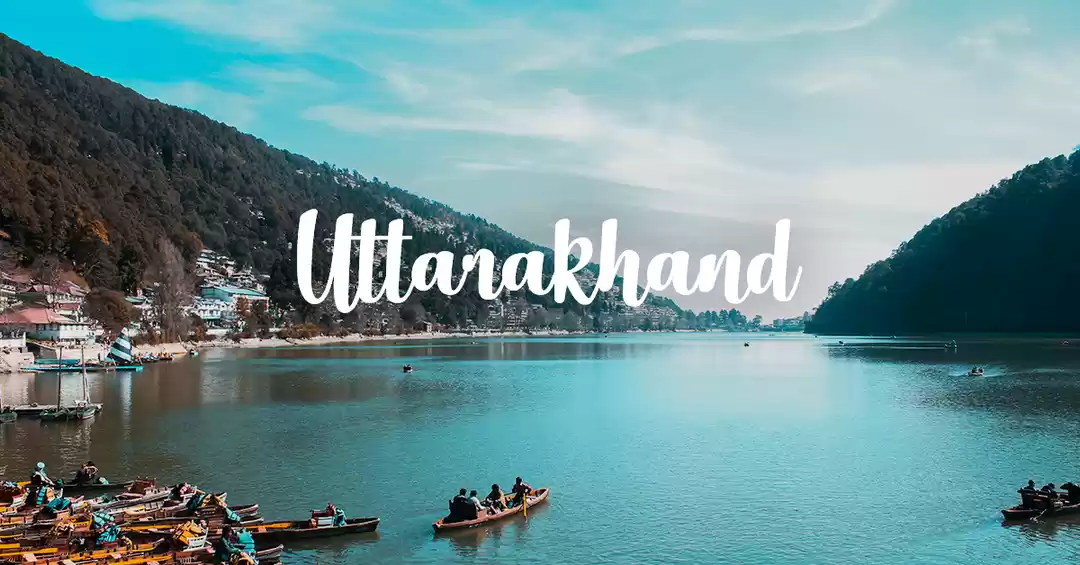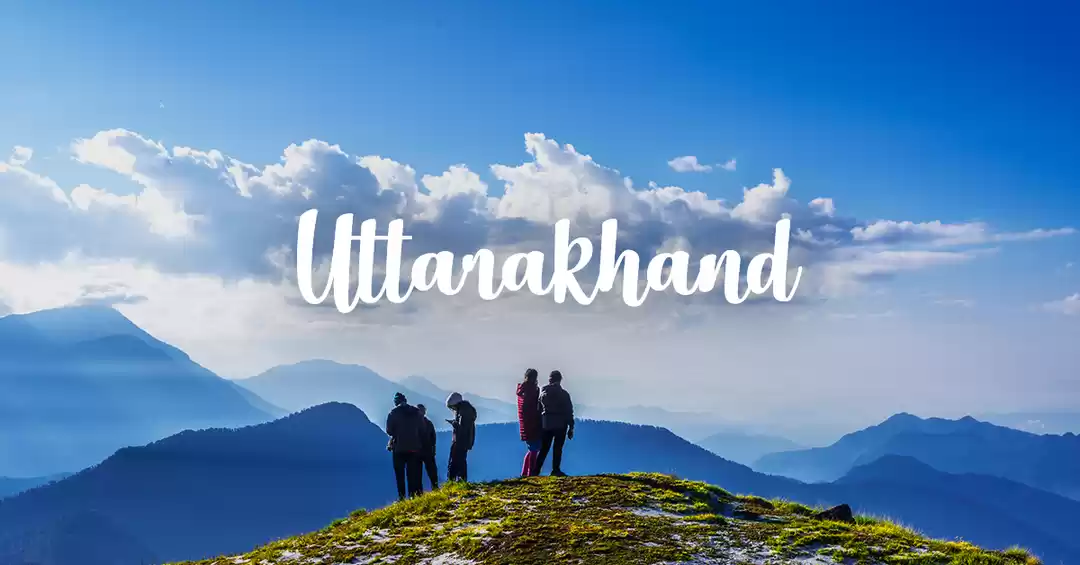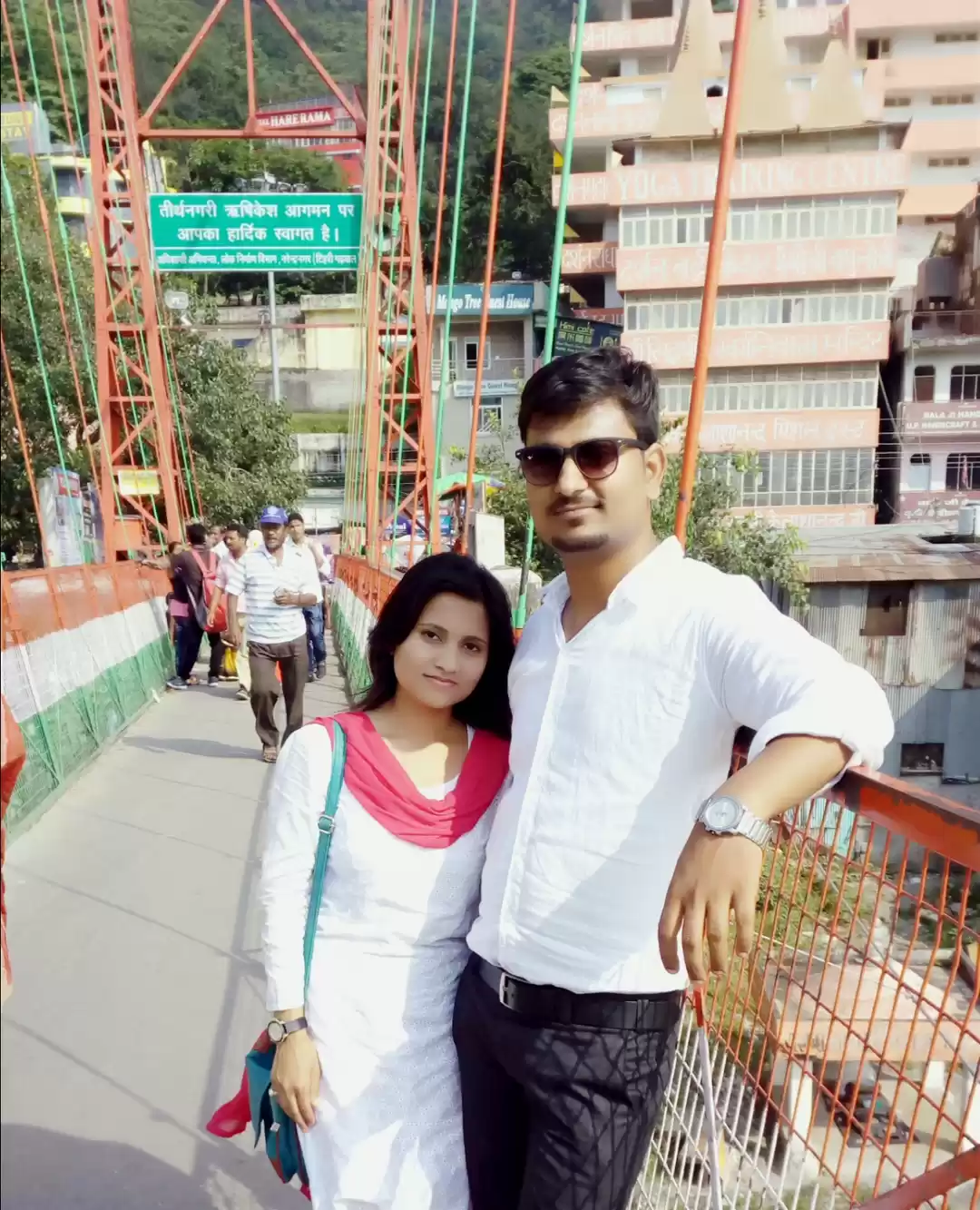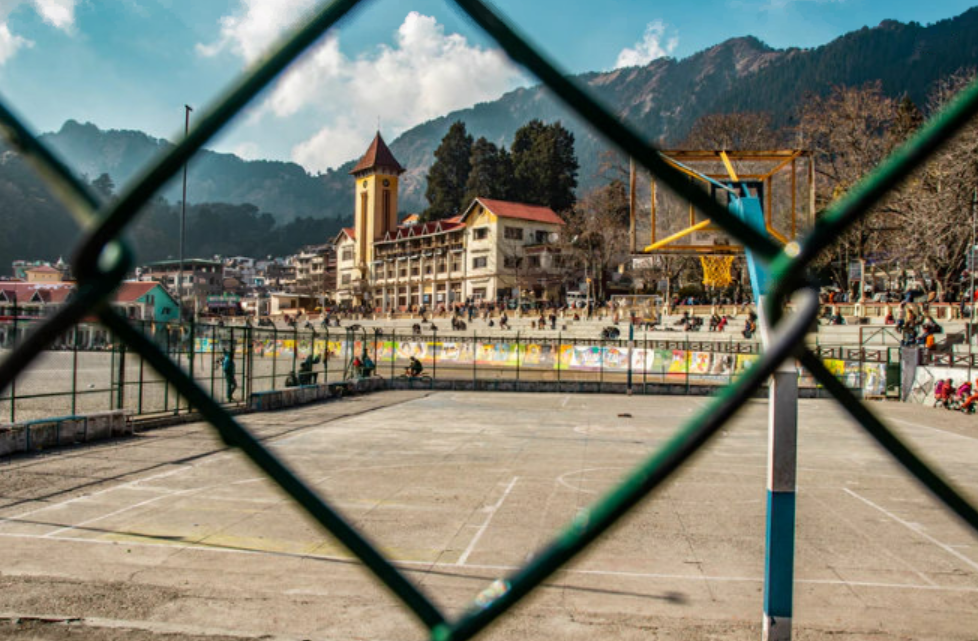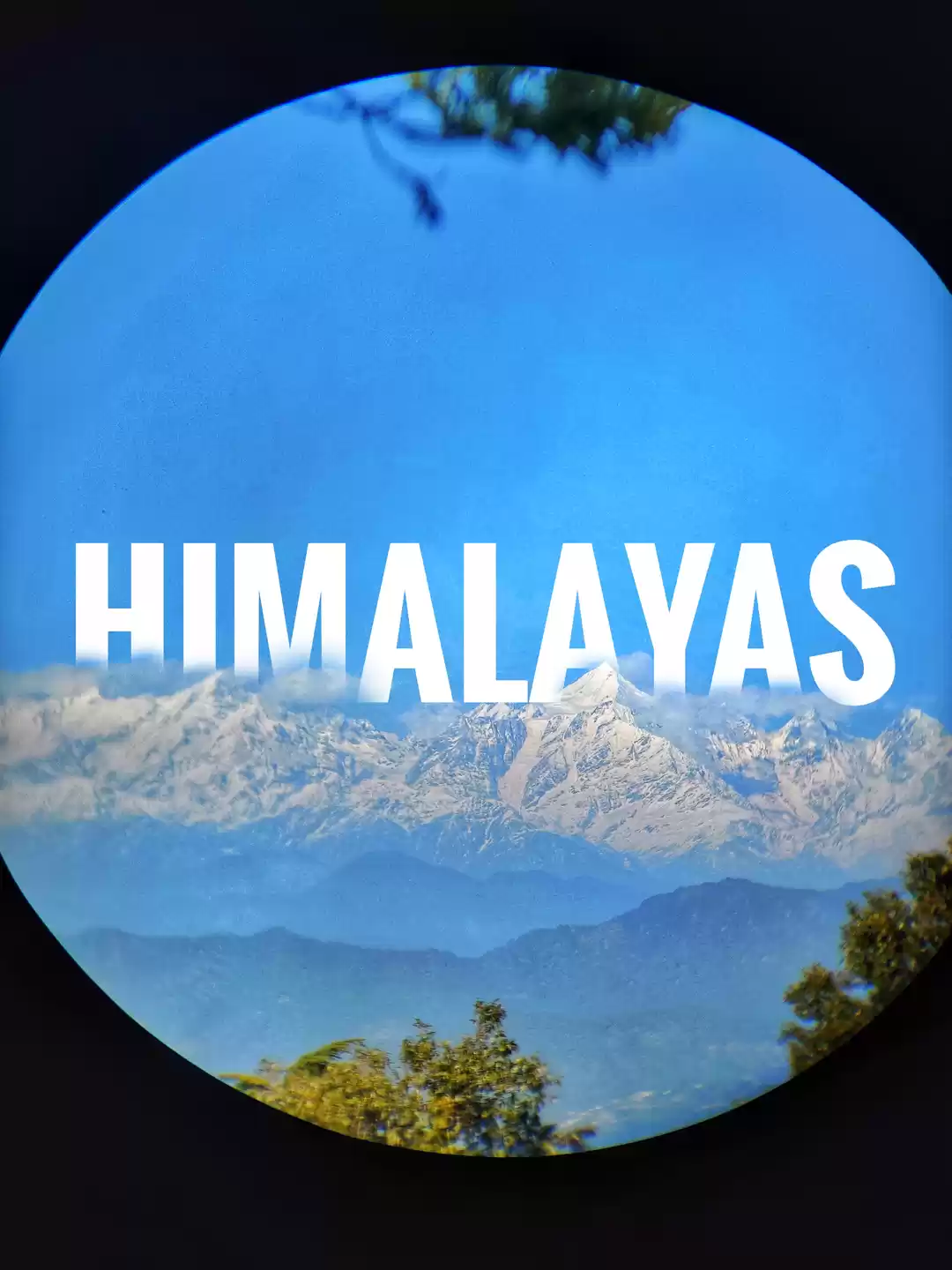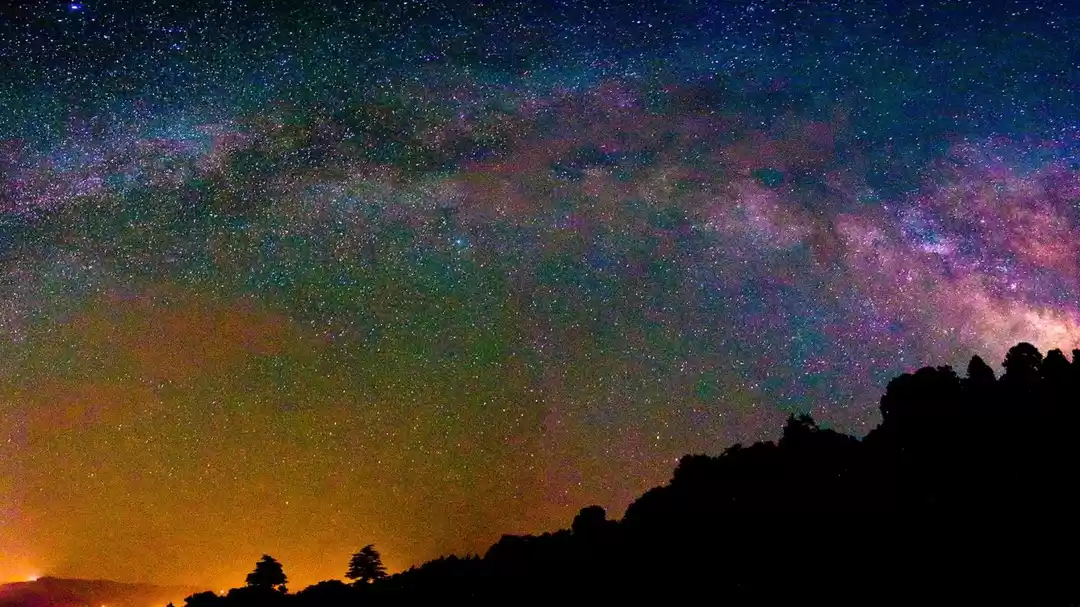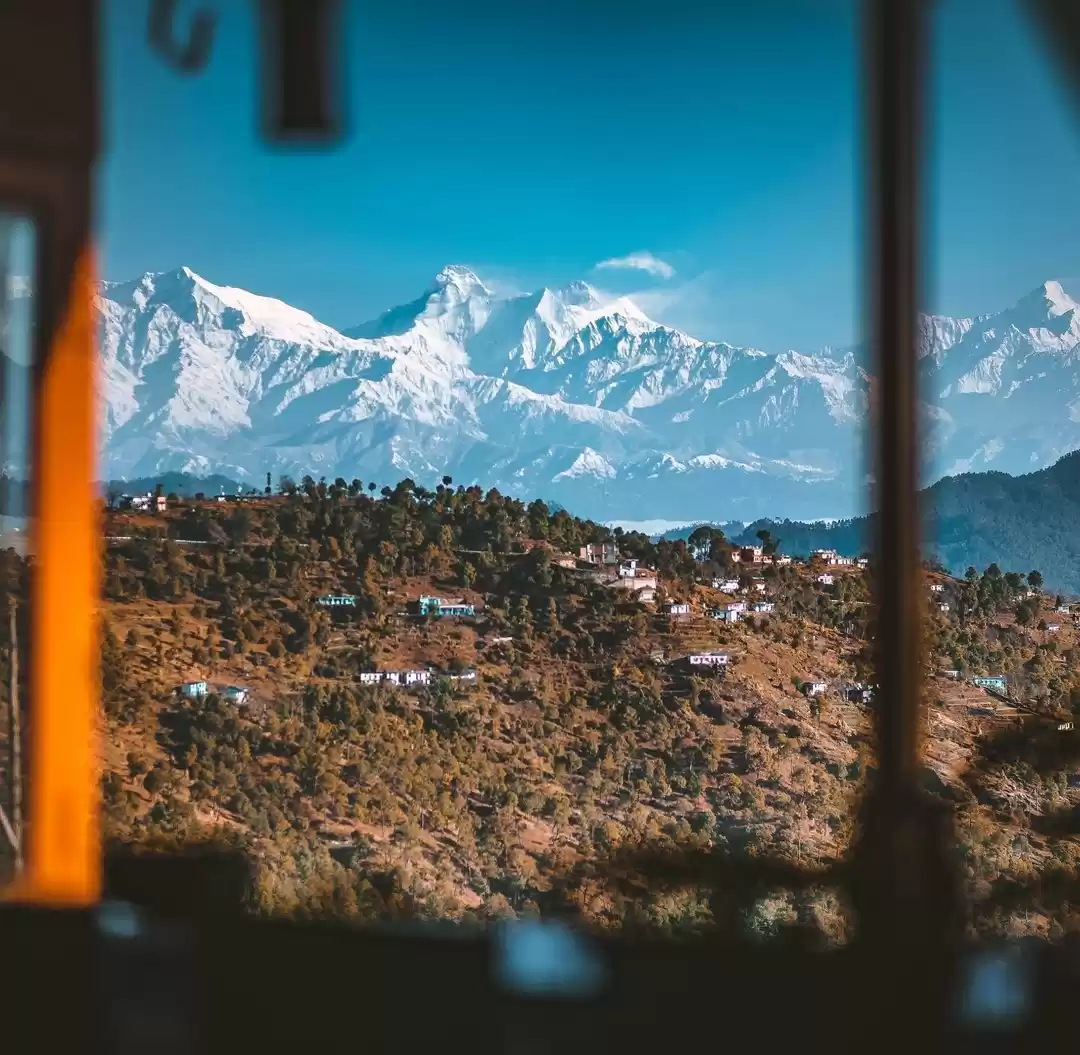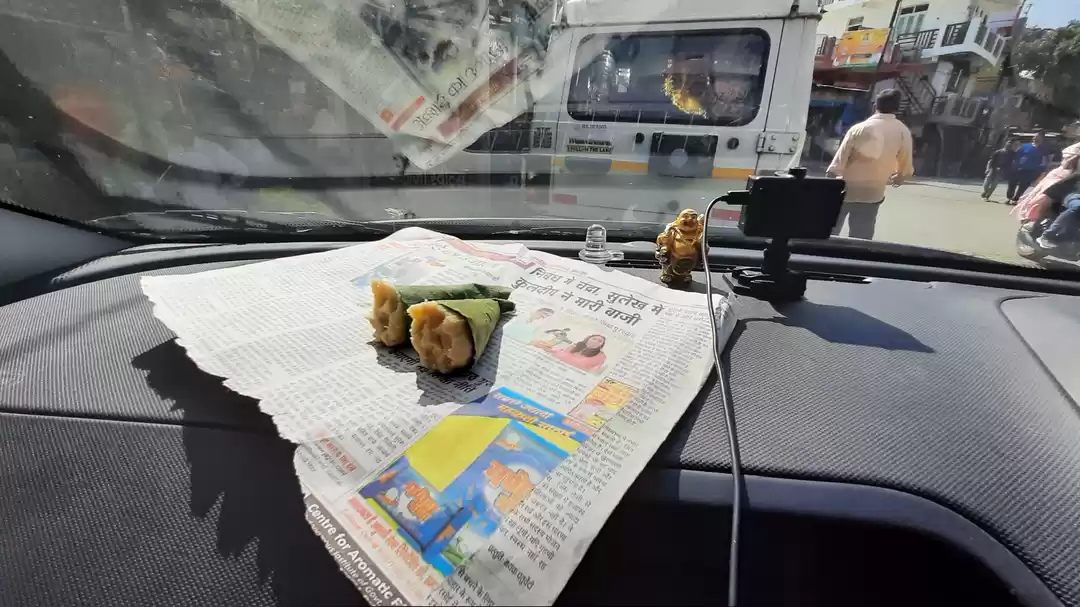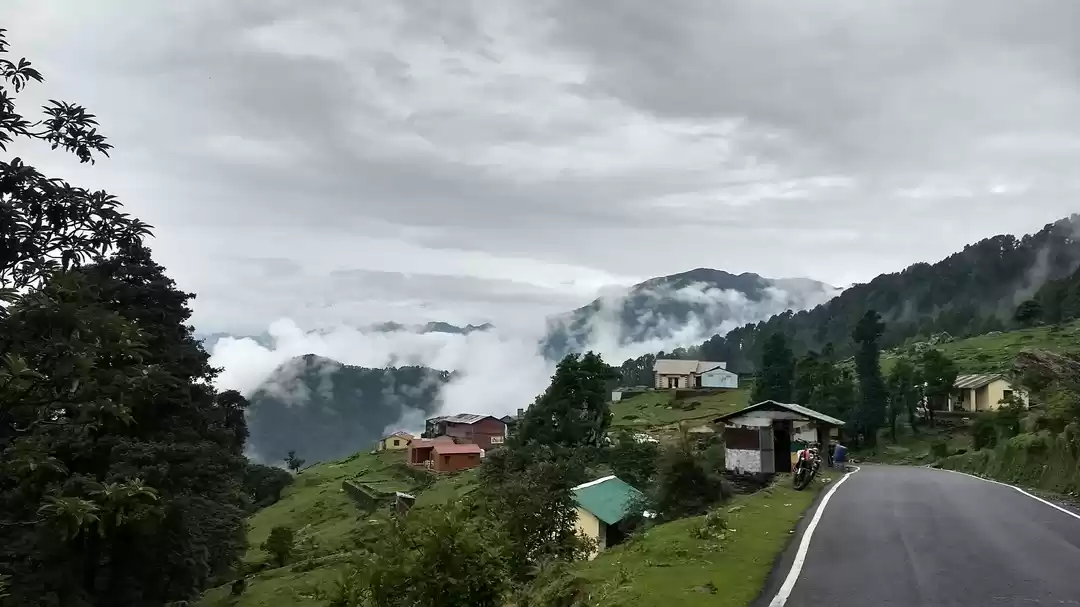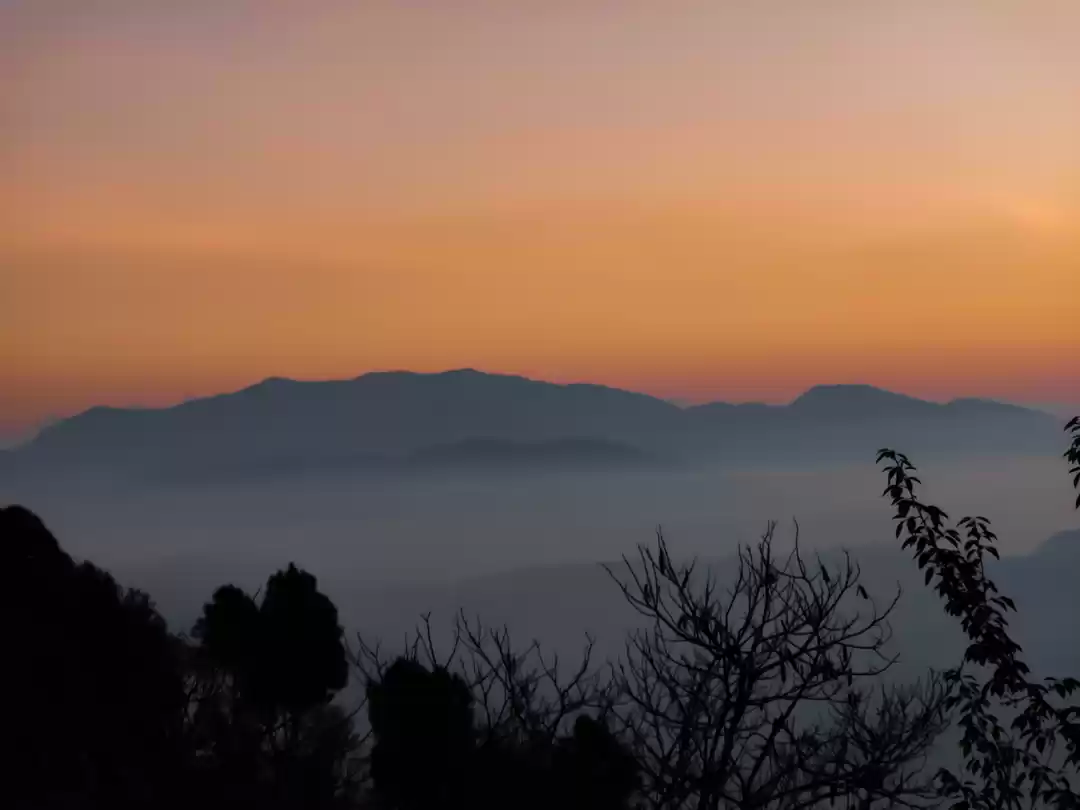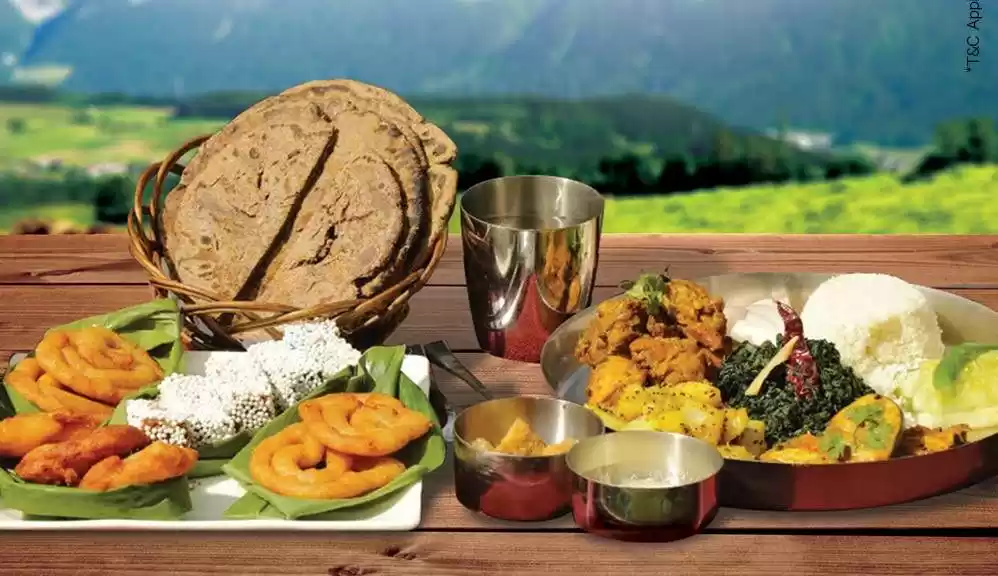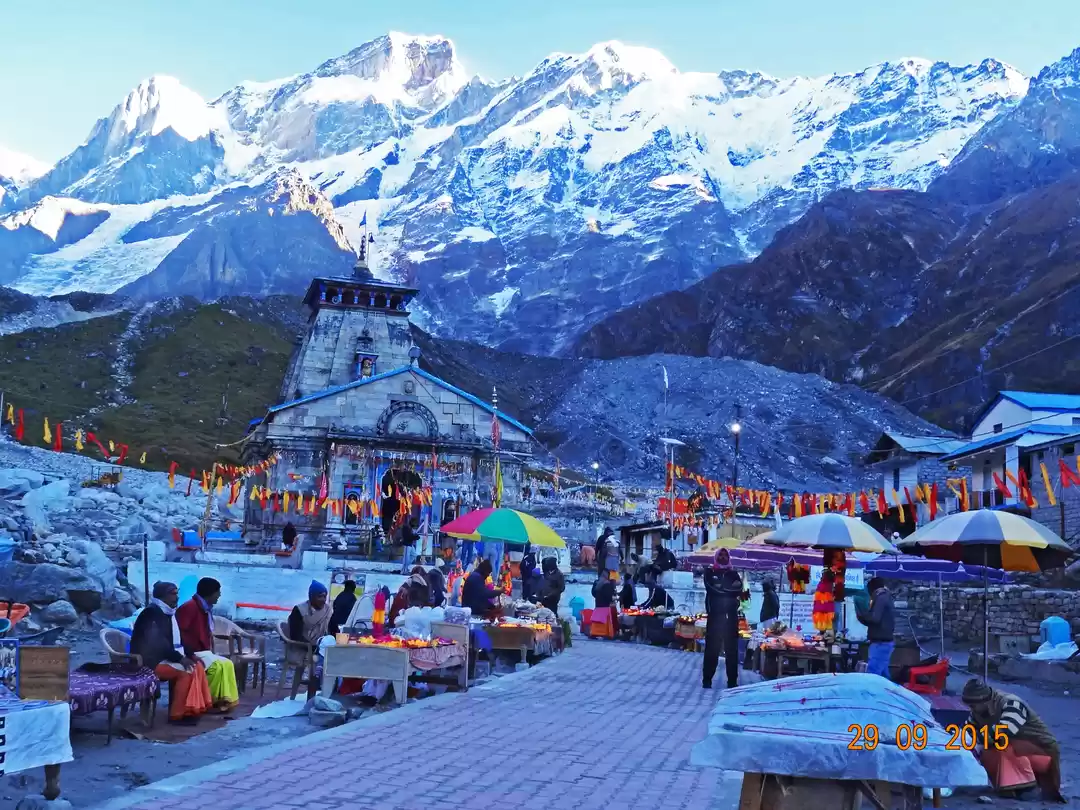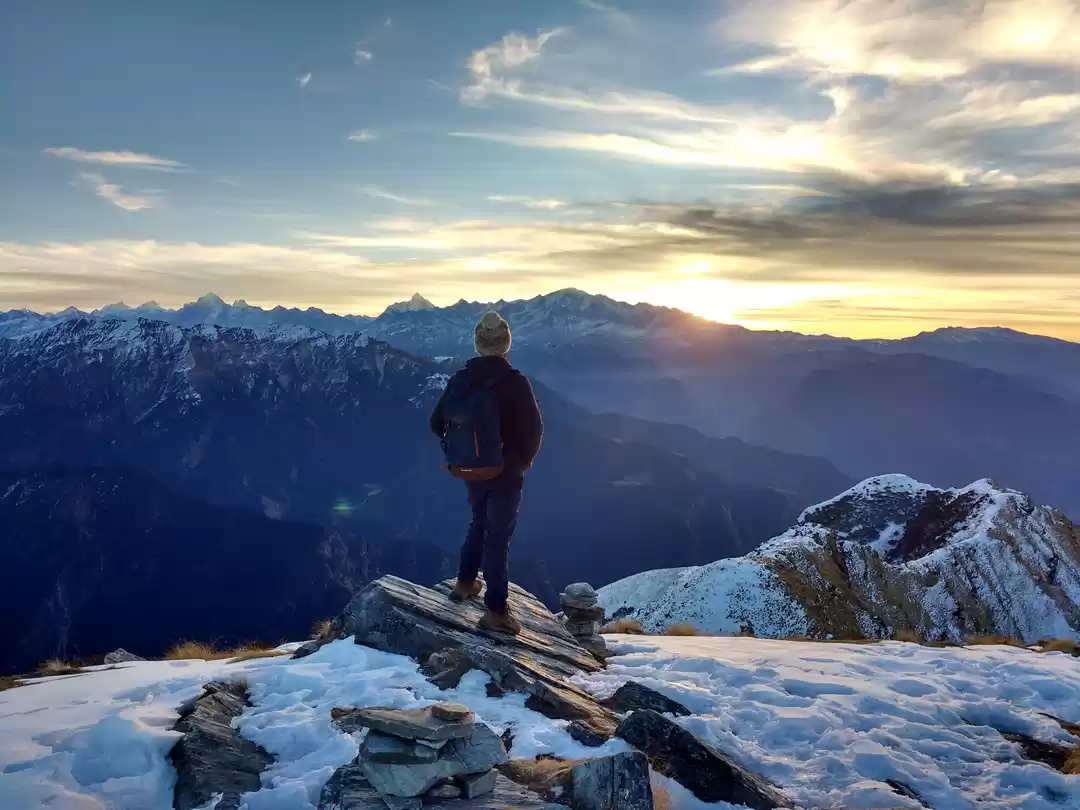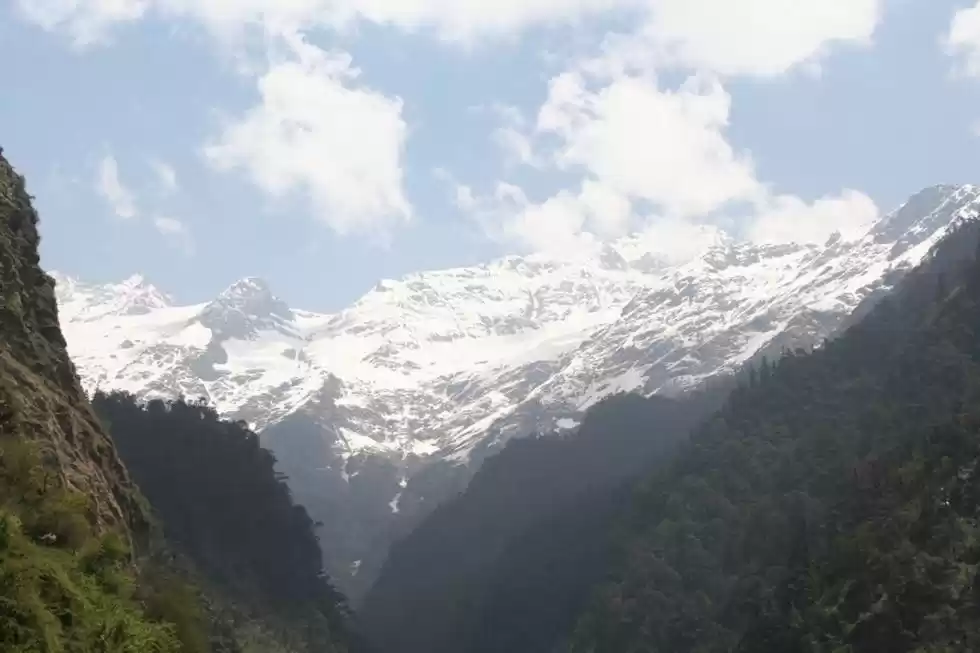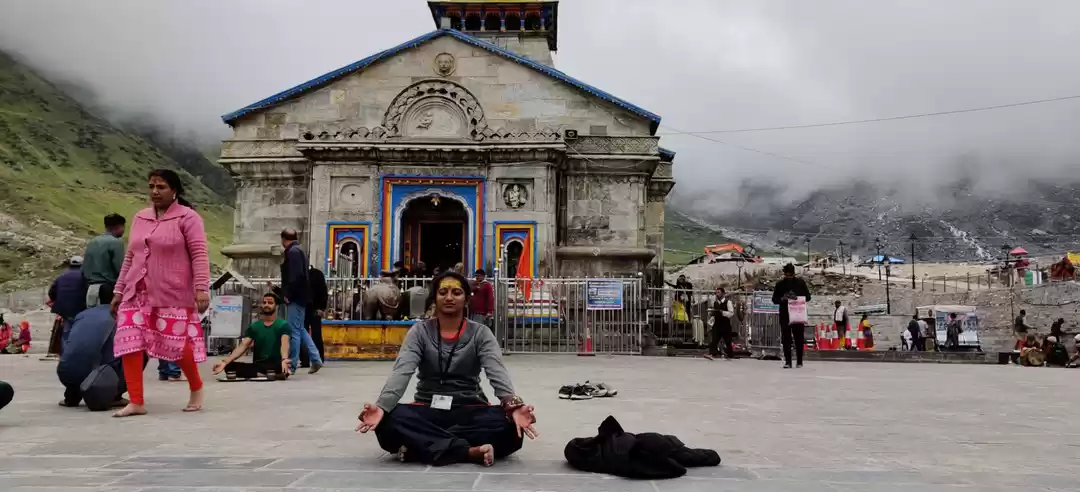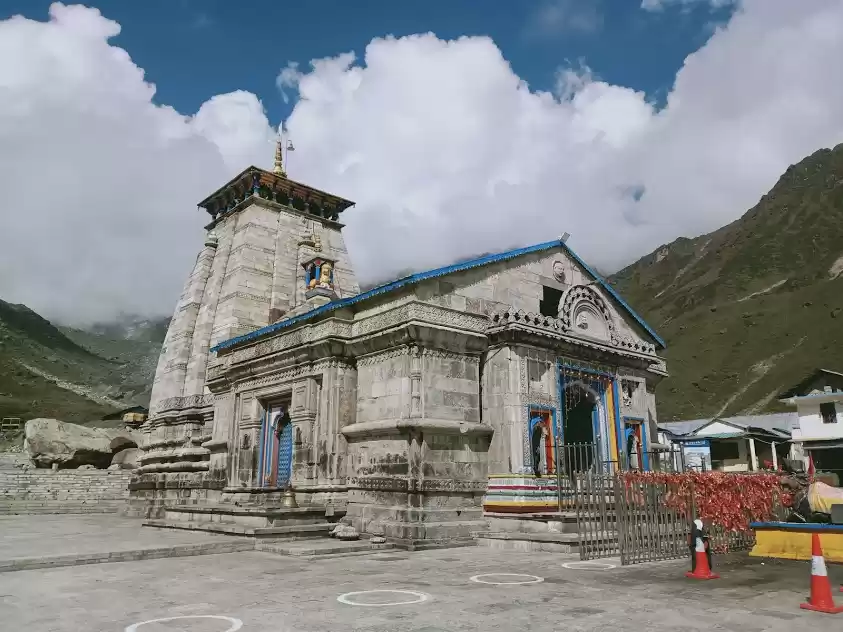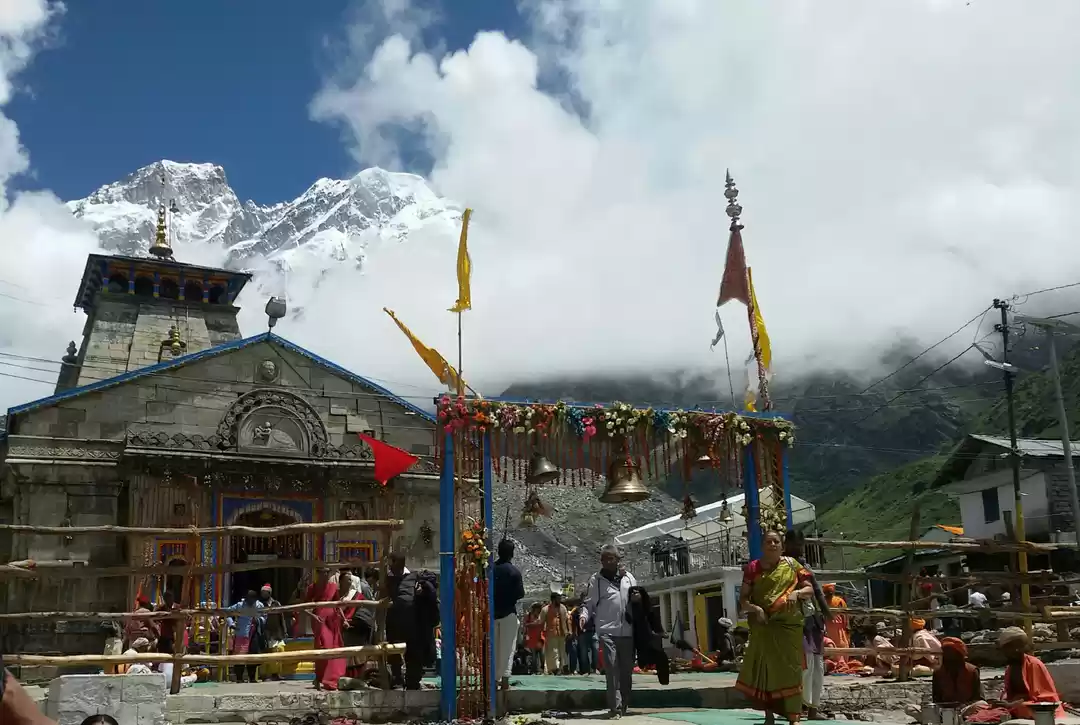
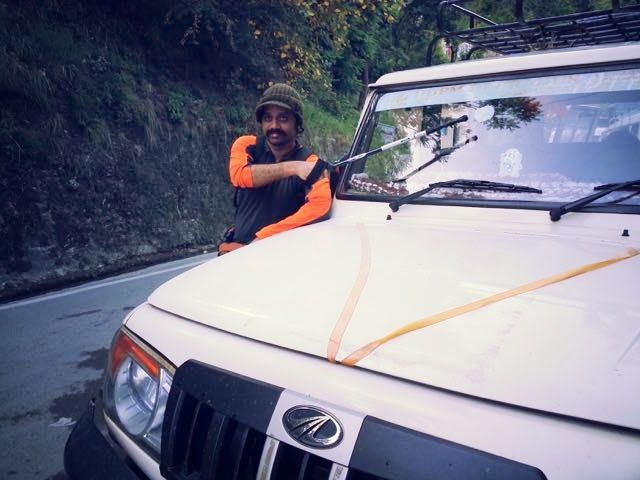

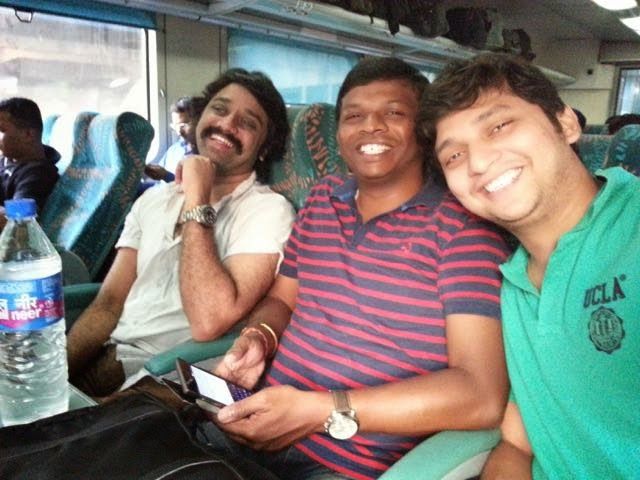
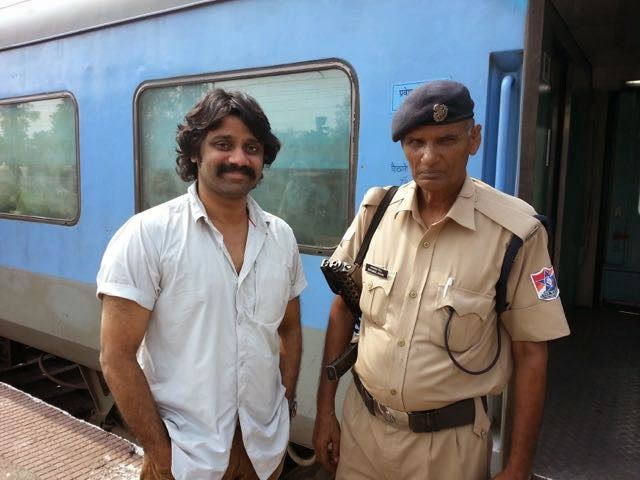
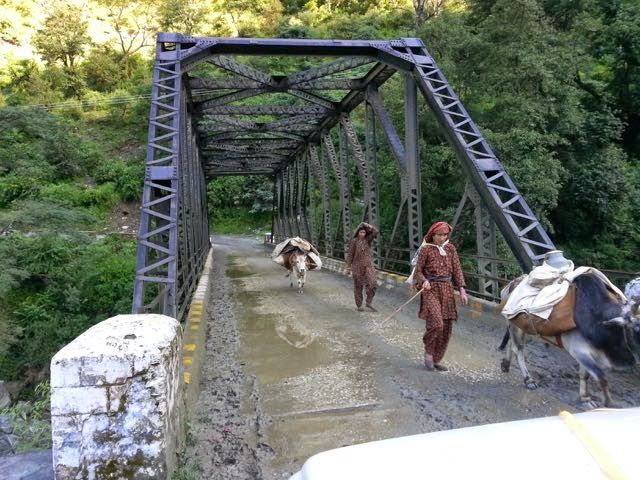
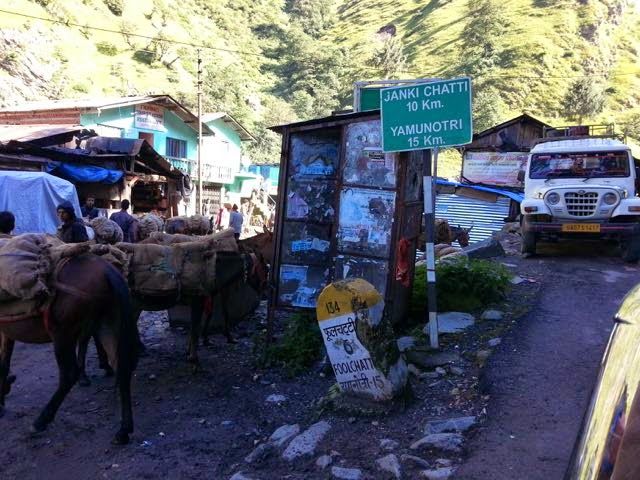
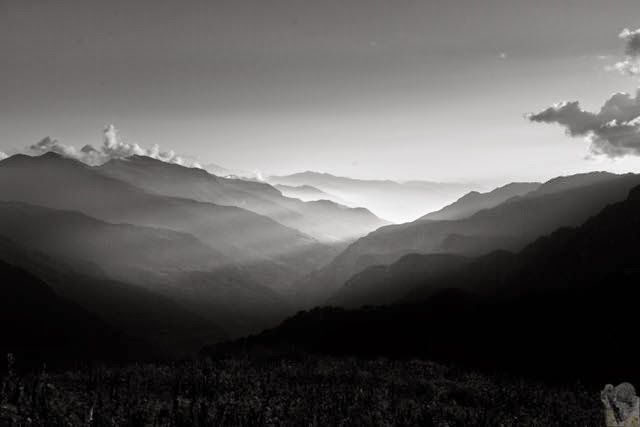
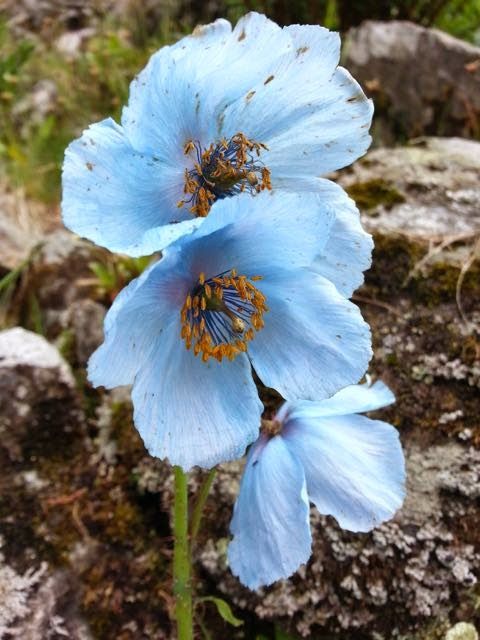

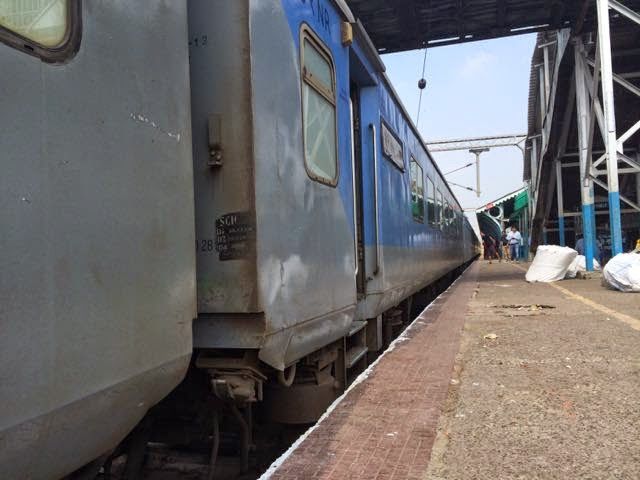
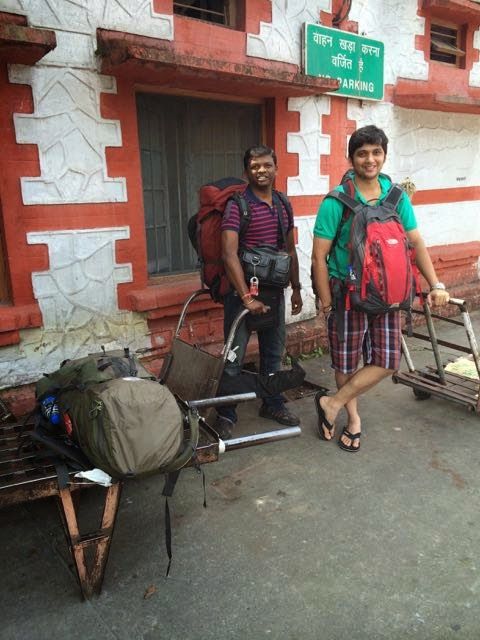
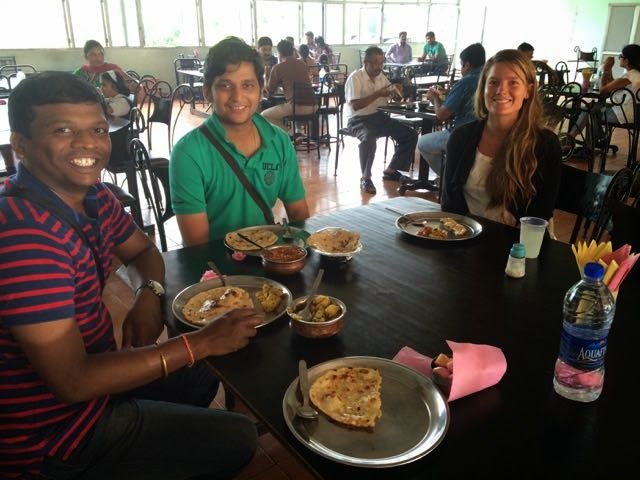
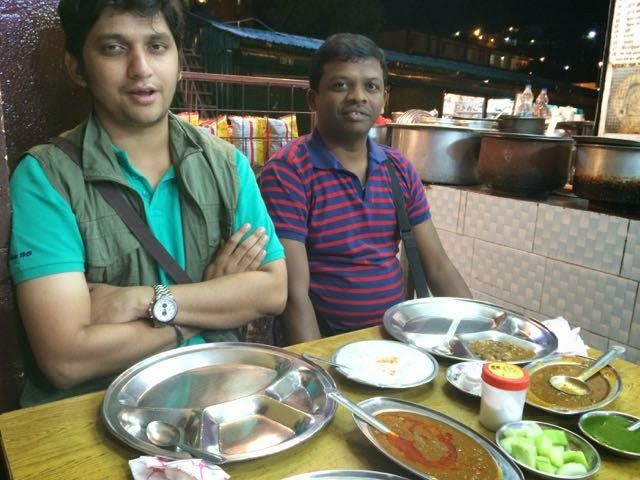
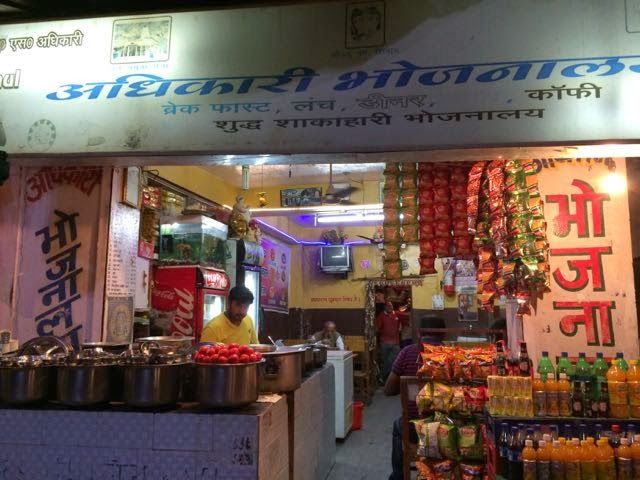
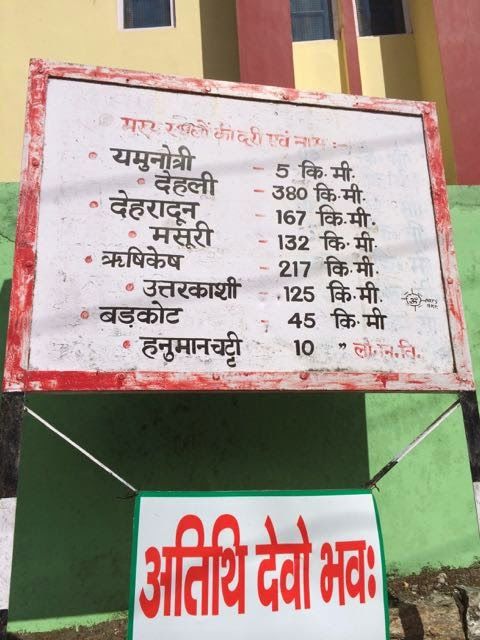
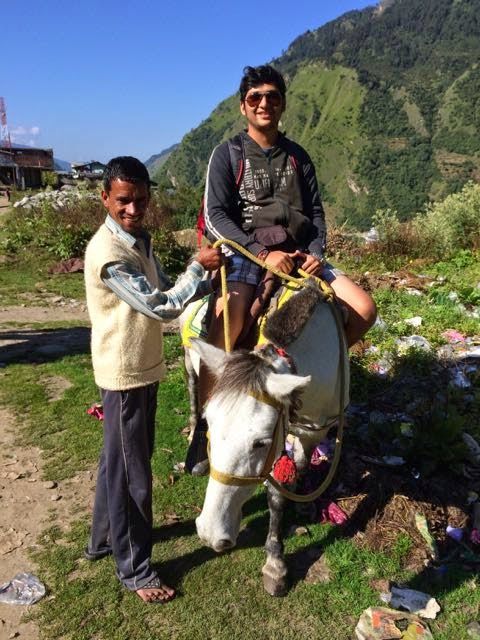
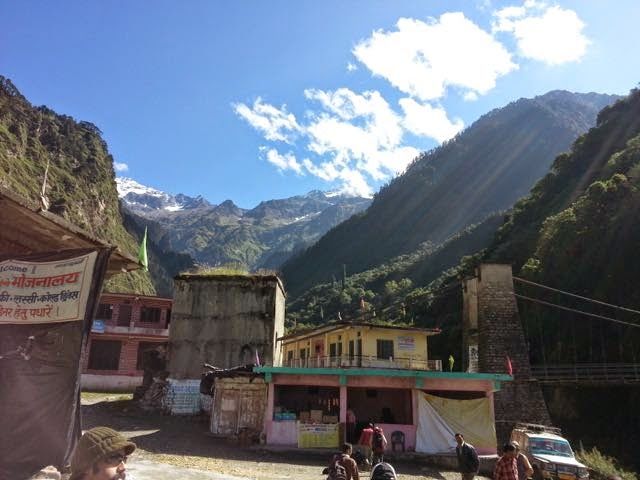
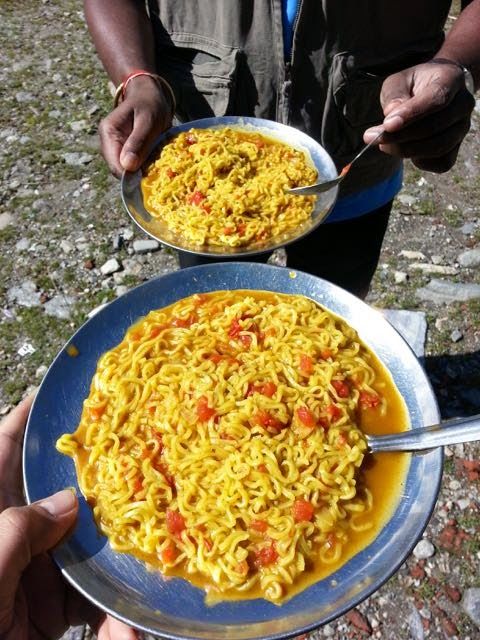
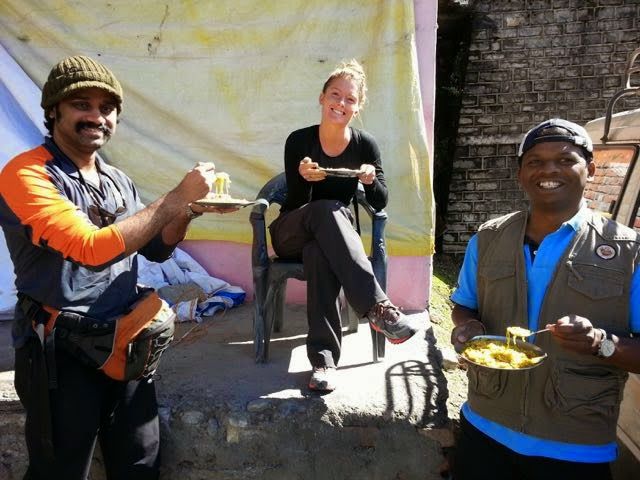
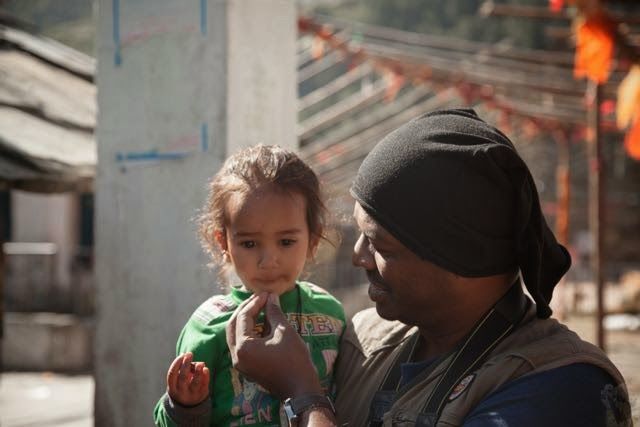
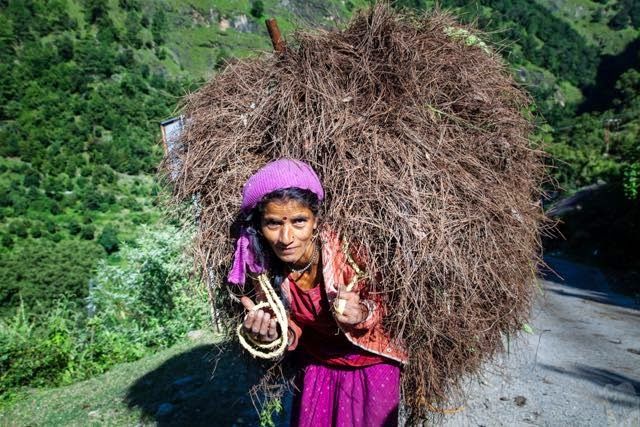
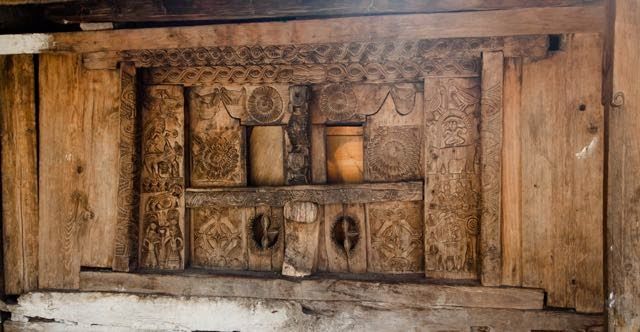
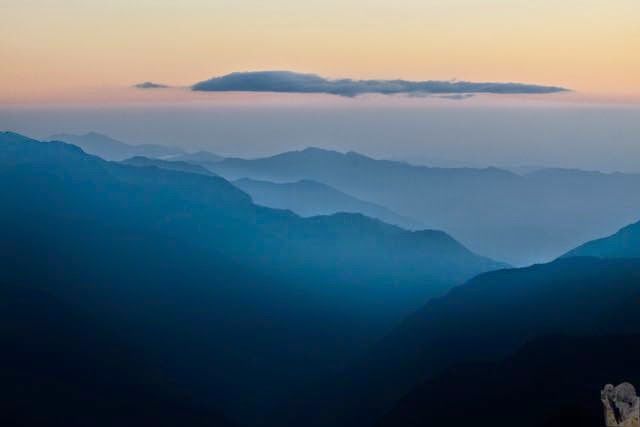
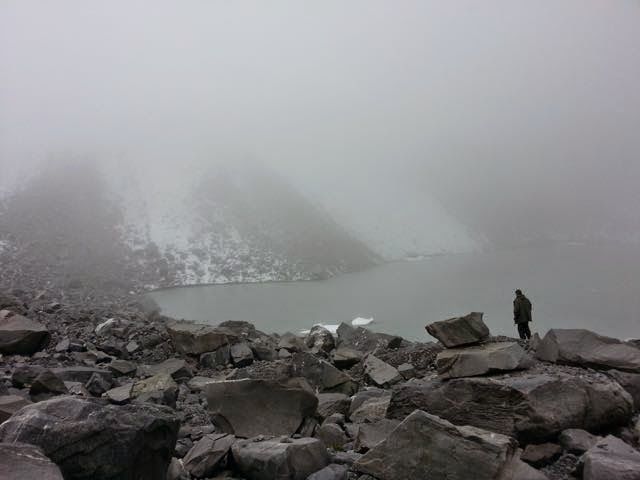
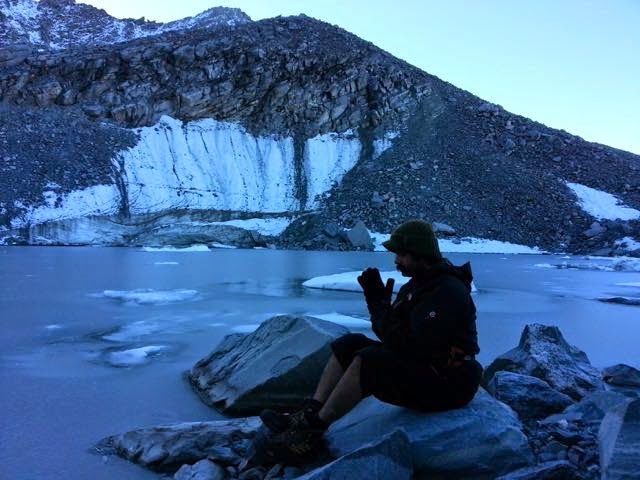
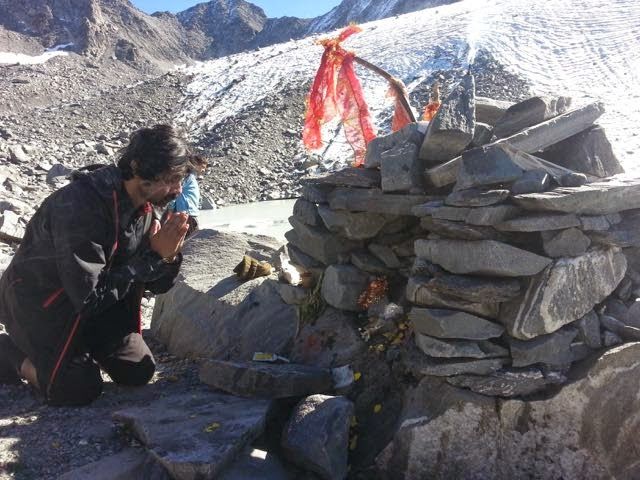
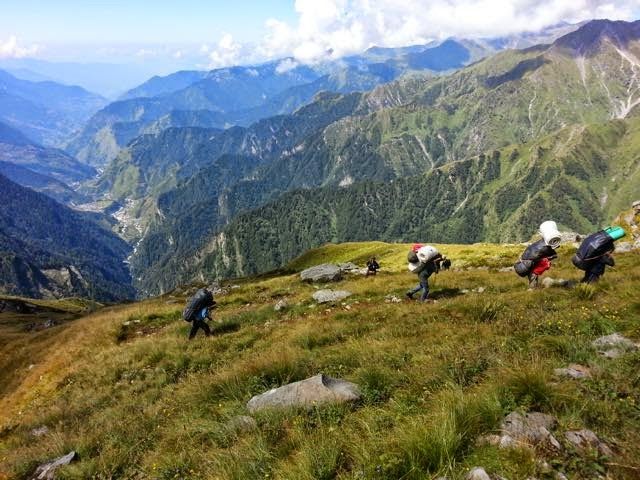
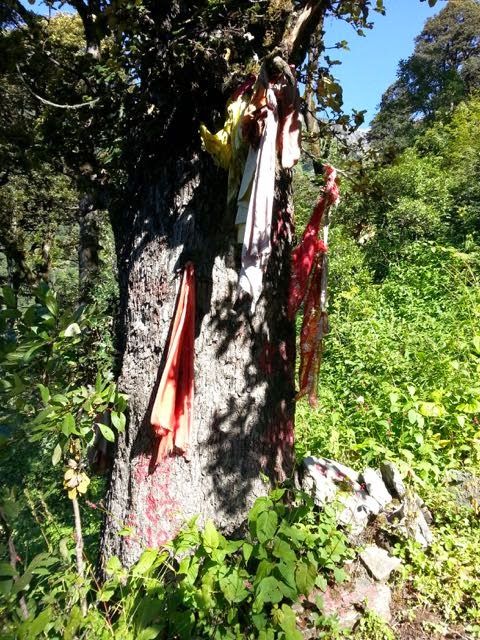
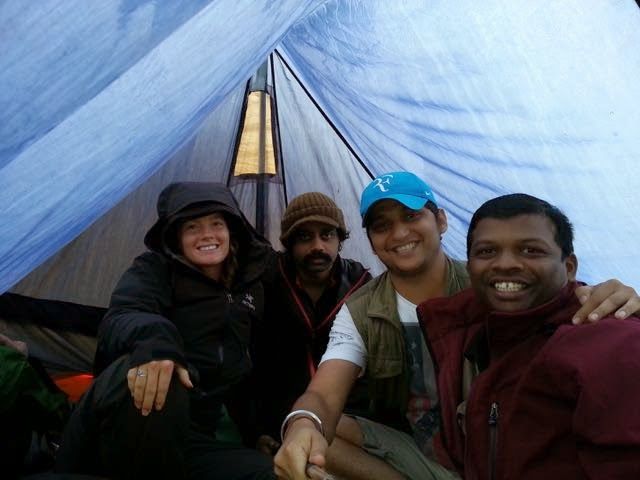
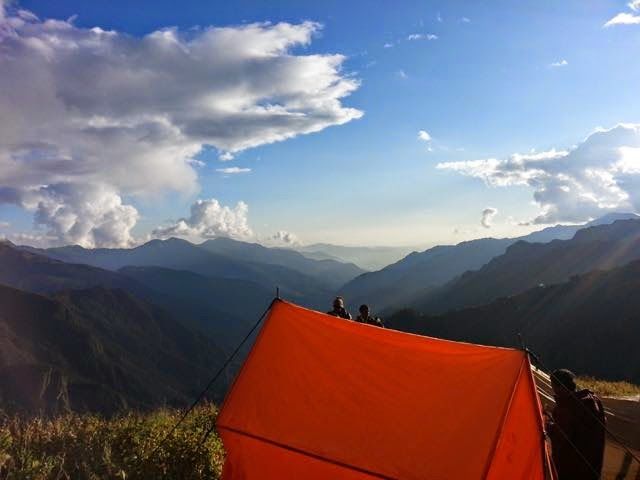
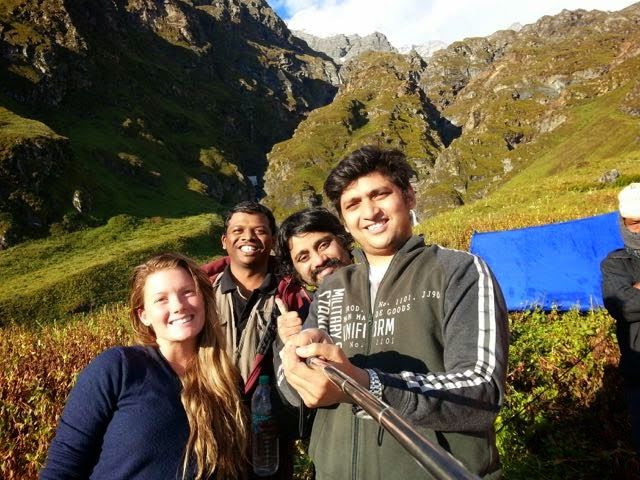
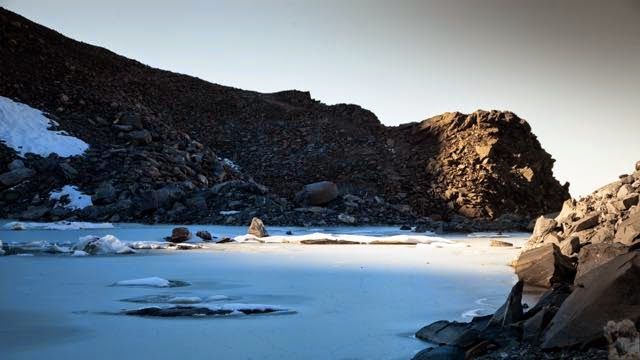

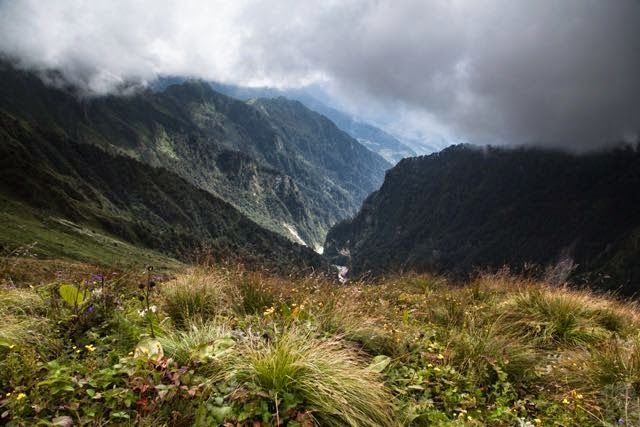
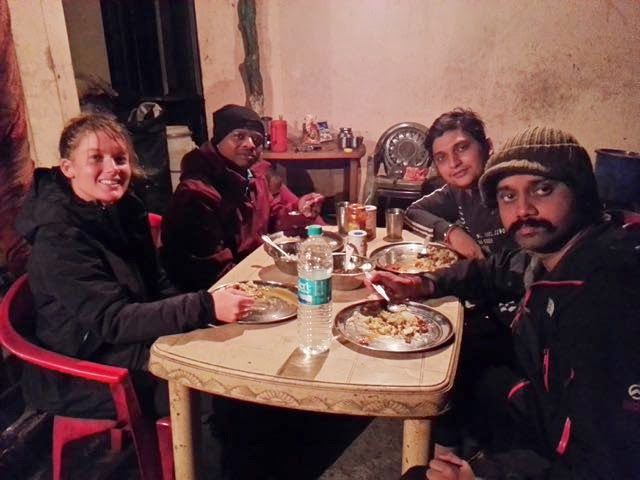
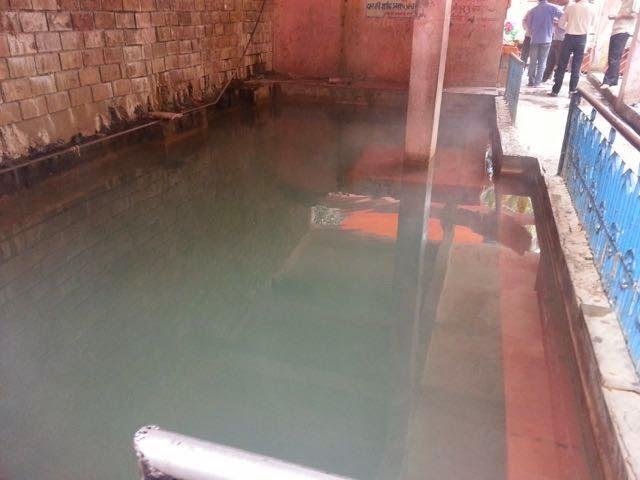

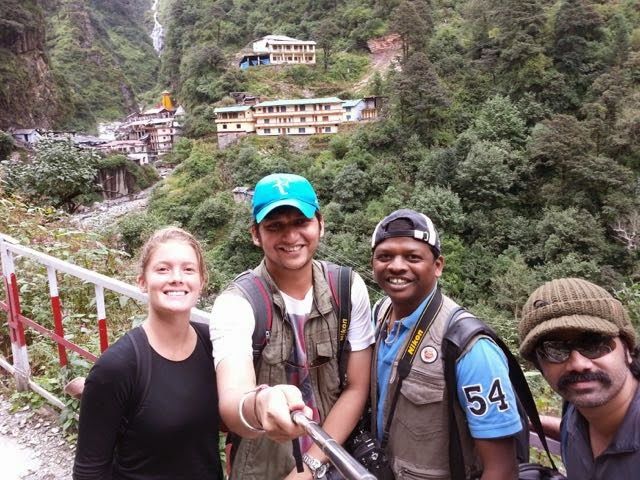
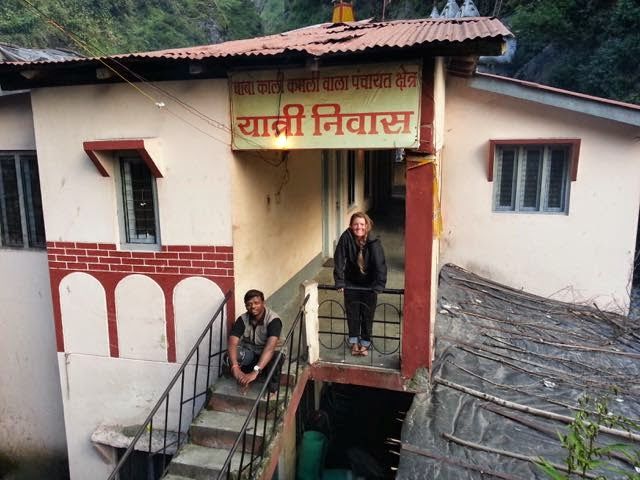
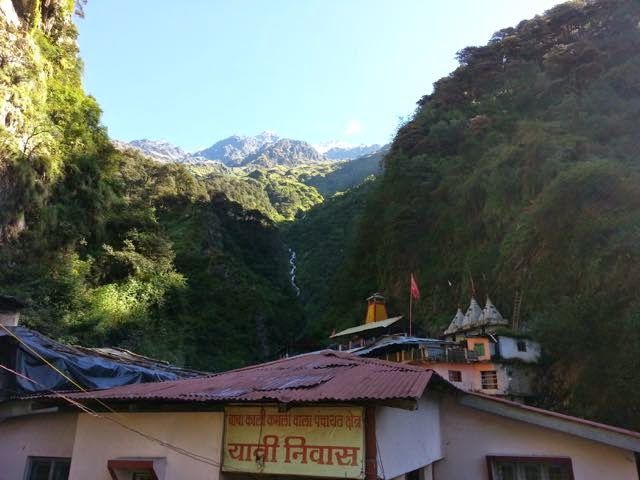
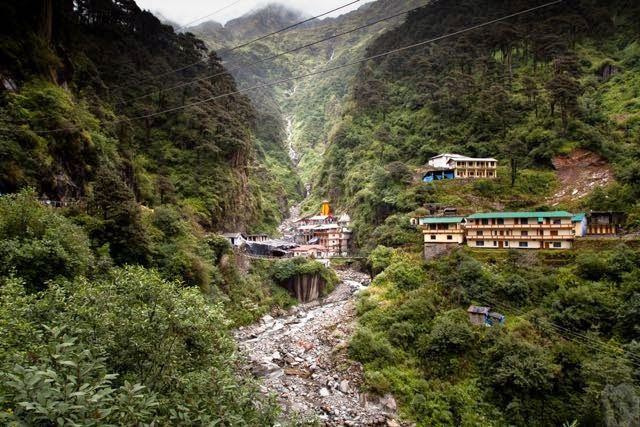
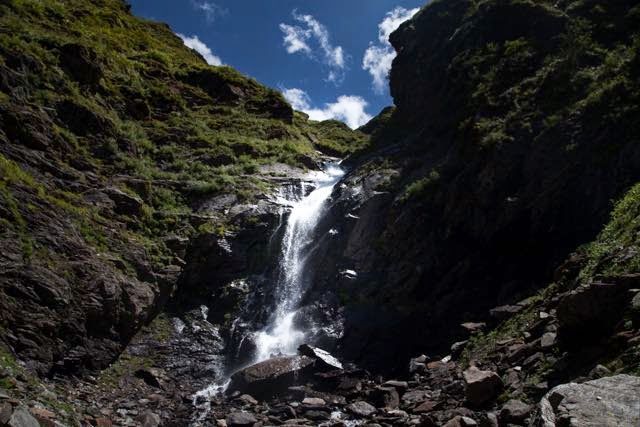
Yamnotri (10600 ft) is one of the Chardhams ( 4 holy pilgrimage) of Sanatan Dharma. Located in the Uttarkashi district in northern indian state of Uttaranchal it lies near the Bandarpoonch Mountains (6315m). The Yamnotri temple marks the location of Yamuna river Goddess though its actual source lies 15kms above at Saptrishi Kund (18000 ft / 15000ft). During month of September 2014, I had the immense pleasure of visiting the Saptrishi Kund which is an very hard and arduous trek involving non existent paths, glaciers and streams. The ultimate gift was to be able to camp at Saptrishi Kund overnight (a feat only few have managed in history of treks accounted here). The trek path is least explored and has some amazing rare fauna and flora of medicinal values which was the main purpose of this trek. I have made an attempt to document this trek through pictures and less words.
DAY 1
We arrived to Delhi airport overnight and checked in at Yatri-Niwas near New Delhi Railway station. We had to catch the Dehradhun Shatabdi train which departs at 6.30 am from New Delhi for Dehradhun
For this trip I was accompanied by Leia Hays, a Yog teacher from USA who was on a study tour to India. She had contacted me and shown her keen interest to accompany me in my travels of documenting highland Yog practices and collecting exclusive herbs. As per plans she was supposed to meet us at Dehradhun from where we would collectively move towards Barkot for the night.
After a topsy turvy ride which for most part was uncomfortable to many in the car due to un-accustomed mountain roads and some bad food choices we finally reached Barkot late evening. We checked in to a budget lodge which had lots of mosquitoes for company but the rigors of journey overshadowed the discomfort. As plans we were supposed to leave next morning by road to Jankichatti to start our trek to Saptrishi Kund. Miss Hays was too rattled by her first journey to the Himalayan mountains and decided t ocall it a day, while we three decided to venture out in the evening to try some local food before hitting the bed.
DAY 2
After a good night sleep, we rose early morning to commence our journey towards Yamnotri. Today we would be traveling by car to Jankichatti (the last motor-able point) from where we had a easy uphill climb of 6kms towards Yamnotri temple. Earlier times before the roads were open to Jankaichatti, pilgrims had to trek a steep 13 kms from Hanuman Chatti to reach Yamnotri.
It was raining as we reached Yamnotri. We checked in to our lodging which was more of a budget accommodation at around 300-500Rs per room but served the purpose. After having some tea and rest we moved on to visit the temple. As is the case with many highland temples in Himalaya, Yamnotri temple is located at geocentric spot with ceased volcanic activity resulting in many hot springs. One such spring/Kund is located in the temple premises. Yamuna Goddess is considered to be the daughter of Sun and hence the Kund is known as Surya (Sun) Kund. We decided to bathe in its refreshing waters before we moved to the temple to offer oblations.
After visit to the temple, we visited the adjoining Hanuman temple. The main priest whom I addressed to as Babaji is an amazing hath yogi, who stays year round at the temple in freezing conditions. For knowledge of readers the temple closes at Diwali and is totally submerged under snow till April when it reopens. It was an immense pleasure to gain an audience with him and know about Yog and Ayurveda.
DAY 3
Today we were moving into uncharted territories to the source of Yamuna at Saptrishi Kund. The Kund lies 1km above Yamuna from where its glacial waters come gushing down. However to reach it one must undergo an round-about ardous trek of 15km, a prime reason why Yamnotri temple was built at the present accessible location. The local Rawat's do this journey from Yamnotri To Saptrishi Kund and back in one day as they know the short routes and are accustomed to the weather but for people like us who dwell in sedentary lives of city and live for most part near sea level this journey is very arduous due to lack of well defined trek route. Secondly there are hardly any camping spots in the route to break the journey and third and most important point; it's risky to camp at Saptrishi Kund (very few may have done it) due to high speed winds. Saptrishi Kund also is a natural source to find high quality Blue sapphires and many venture here to try their luck but the inaccessibility and harsh conditions it becomes impossible to hit gold. I got some very good information about the diversity, medicinal flora and mythological importance of the place from my previous night conversation with Babaji. We paid an early morning visit to the temple to seek blessings for our journey. After breakfast around 8am we started our uphill climb towards the Kund. The entire journey is steep ascent and descent with very narrow ridges to maneuver. One needs to keep balance and focus as one wrong step and you are in the deep gorge on your way to hell or heaven. The route due to overnight rain becomes very slippery and many times one needs to make alternate routes as one wrong step washes away the track. Apart from all this difficulties the views are magnificent with some real exclusive flora along the way. I came across many medicinal plants navigating this tough routes. We had our lunch at stream which had good flat space. After lunch the trek was difficult for most of us were out of steam. To add to it the weather became heavy and it started drizzling. Fortunately we were close to a meadow. the only probably place to camp. This meadow known as Damini Bugyal (bugyal means medow) (14000ft)bought some relief to our stressed legs as we set camp here. We were just lucky as the moment we set up tents a hail shower stuck us. However afterwards the skies opened up giving a magnificent view of the valley. We retired for the night here after having some delicious food comprising of soup, vegetable and wheat rotis.
DAY 4
We woke to a bright sunlight. Our stiffness was gone but we knew that a hard trek awaited us. We had to climb to 18000 odd feet through some very steep switchbacks. We had taken a bold decision to camp at Saptrishi Kund , something which is rarely attempted and if the weather turned on us we would be forced to turn back in pitch darkness. After clicking some group pictures and enjoying the view we had our breakfast and quickly started our uphill journey. This leg of journey gives access to some very elusive medicinal flora of Ativish (Aconitum heterophyllum), Himalayan blue poppy (Meconopsis aculeta), Himalayan Black Kutki (Piccorhiza kurro), Salam Panja (Dactylorhiza hatageira) and the legendary Brahma Kamal (Sassurea obvatifolia). We slowly tread our way through the switch backs but a new challenge awaited us. Around 3kms from the Kund we came across a steep glacier which we had to cross to access the route to Saptarishi Kund. With no equipment and the steep nature of the glacier it looked extremely difficult to move ahead. on false step and you go rushing down the ice into the waters of Yamuna. We waited there around an hour for a solution and finally our Nepali porter helped each one us to cross the glacier by manually carving steps in the glacier. It was dangerous yet exciting but we managed to cross the side. From here the route up consists of hard rocks which makes the climb even more tiring on the legs. To add to it the weather became overcast and increased our urgency to setup camp before the winds picked up. With determination and almost drained out energy we finally made to the top by evening after a 7hr climb. The first views of the frozen Saptrishi Kund surrounded by mountains just pushes you in a separate realm. It is as if one ceases to exist. You are left spellbound and all the doubts one has through the journey about the reason and validity to undergo such rigors is vanished. It is believed that Saptarishi or the seven legendary Sages (who established the Sanatan Dharma) meditated here to gain wisdom and a deep glance at the surroundings would not leave any doubt as to why this Kund is regarded holy. Though the elation was boundless eventually as the body cooled down, the impending rain forced us to set up tents quick and call it a night. Our tents were not of good quality. I feel even the porters never expected we would make it to the Kund as 80% times the excursion is called of midway due to bad weather. The cool winds which passed through the injuries of the substandard tent kept me up all night and in between I ventured out few times primarily to free my cramping legs due to immense cold which also gave me a chance to watch the stars. The view of the stars amidst the frozen lake was mystical and though the harsh climate was forcing me to go back into the tent, the heart was adamant to stay put and grab some time lapse pictures. Eventually common sense prevailed and I retired back to the tent to get whatever rest I could manage for the difficult 15kms downhill climb to Yamnotri next day.
DAY5
We rose up early morning to get some good pictures of the Kund with the rising sun. It was amazing experience. As the wind drop the cold was not that threatening and the water though freezing was welcoming. We took some pictures and then sat for the pooja(prayers) to the Shiv temple. One of our guides was a local priest who conducted the rites at the temple. It was a very blissful experience to experience the pooja in the quiet of the Kund at 18000 ft. We offered our oblations in form of BrahmaKamal we gathered along the way and commenced our return journey back. The journey downhill was very taxing for me. Due to bad quality of tents I had sprained my knees and it was becoming extremely difficult to move down. I somehow managed to reach the glacier on my feet. We all crossed this time with some ease and confidence. After that the road down was very steep and my knees gave way. I decided to climb down the remaining 12 km distance on all fours with slides through the shortcut slopes. This put immense pressure on my arms but finally by evening I managed to reach Yamnotri. It took me almost 90 minutes more than my friends to reach base but eventually i made it. After some rest we all congratulated each other on the successful expedition and made our way to the Surya-Kund again for some relaxing warm water bath After that we visited the Yamnotri temple for the evening Aarti, That night after dinner we quickly retired to bed as all of us were physically drained.
DAY 6
Due to my perils of previous day, I was forced to take a pony ride down to Janakichatti as my legs were officially dead. It was mutually decided by all of us that each one of us would take the pony down. I would like to make it clear that in my 13 years of trekking history, this is the first time I ever took assistance and it was not fun, neither the thought nor the actual journey. Pony ride may seem exciting to envision but most times ponies are erratic and on the steep switchbacks the ride may leave you bruised both mentally and physically. After paying our last oblations to Yamnotri we started our journey downhill. We had decided to visit a nearby village of Kharsali, 1km from Jankichatti before we commenced or journey back to Barkot. Kharsali village houses the ancient Shani temple which on its walls has un-decoded inscriptions. This very ancient stone temple with amazing rustic decor made of wood has survived many earthquakes. It houses an idol of Shani above which are located two vessels on a platform. Legend has it that these two vessels interchange positions magically each year. The temple through one of its windows offers view of the entire village. Kharasli village is an model of self sustained economy where people grow their own food through private backyard farms. The other livelihood comes from tourism in ferrying people across to temple in pilgrim season. It his here that I employ my policy of educating locals about highland herbs and initiating a buyback policy from them with an agreement of not over harvesting the herbs. If some flora is rare than that plant is not bought in realms of commerce, while the abundant herbs are bought at a fair price which generates employment. After a fulfiling visit to Kharsali we returned back to Jankichatti where a vehicle was awaiting us to ferry us to Barkot where we would collect our extra luggage and carry on to our way back home.

